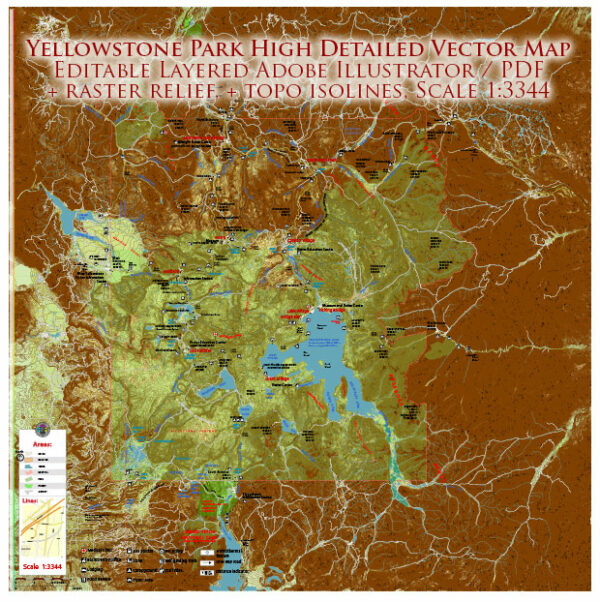Yellowstone National Park, located primarily in the U.S. state of Wyoming, is renowned for its geothermal features, wildlife, and diverse ecosystems. The park was established in 1872 as the first national park in the world. Yellowstone encompasses over 2.2 million acres, and while it is most famous for its geysers, hot springs, and wildlife, it also boasts rich biodiversity, including a variety of plant species.
Biodiversity:
- Flora:
- Yellowstone’s plant life is diverse and adapted to the park’s varying elevations and climates. There are over 1,700 native vascular plant species within the park.
- Vegetation zones include grasslands, sagebrush steppe, subalpine and alpine meadows, coniferous forests, and wetlands.
- Key plant species include lodgepole pine, Douglas fir, subalpine fir, Engelmann spruce, aspen, willow, and various grasses and wildflowers.
- Fauna:
- Yellowstone is home to a wide range of wildlife, including iconic species like the American bison, elk, gray wolf, grizzly bear, and the threatened Yellowstone cutthroat trout.
- The park has one of the largest and most intact temperate ecosystems in the world, providing a habitat for numerous mammal, bird, reptile, and amphibian species.
Botanical Description:
- Thermal Features:
- Yellowstone is known for its geothermal features, including geysers and hot springs. Microorganisms called thermophiles thrive in these extreme conditions, creating vibrant and colorful mats around the geothermal features.
- Vegetation Zones:
- The park’s vegetation is categorized into various zones based on altitude and climate. Lower elevations feature grasslands and sagebrush, while higher elevations have subalpine and alpine meadows.
- Lodgepole Pine Forests:
- Lodgepole pine forests are prevalent in Yellowstone, especially in the lower and middle elevations. These forests play a crucial role in the park’s ecosystem and provide habitat for various species.
- Aspen Groves:
- Aspen groves are found in some areas of the park. These groves are notable for their vibrant yellow foliage in the fall.
- Wetlands:
- Yellowstone has wetlands and meadows that support a variety of plant species, including sedges, rushes, and various wildflowers. These areas are important for wildlife habitat and contribute to the park’s overall biodiversity.
Preserving the ecological balance of Yellowstone National Park is crucial, and ongoing efforts focus on maintaining the delicate relationship between its diverse plant and animal species. The park’s ecosystems are interconnected, and each component plays a vital role in sustaining the overall health and biodiversity of this iconic natural wonder.


 Author: Kirill Shrayber, Ph.D.
Author: Kirill Shrayber, Ph.D.